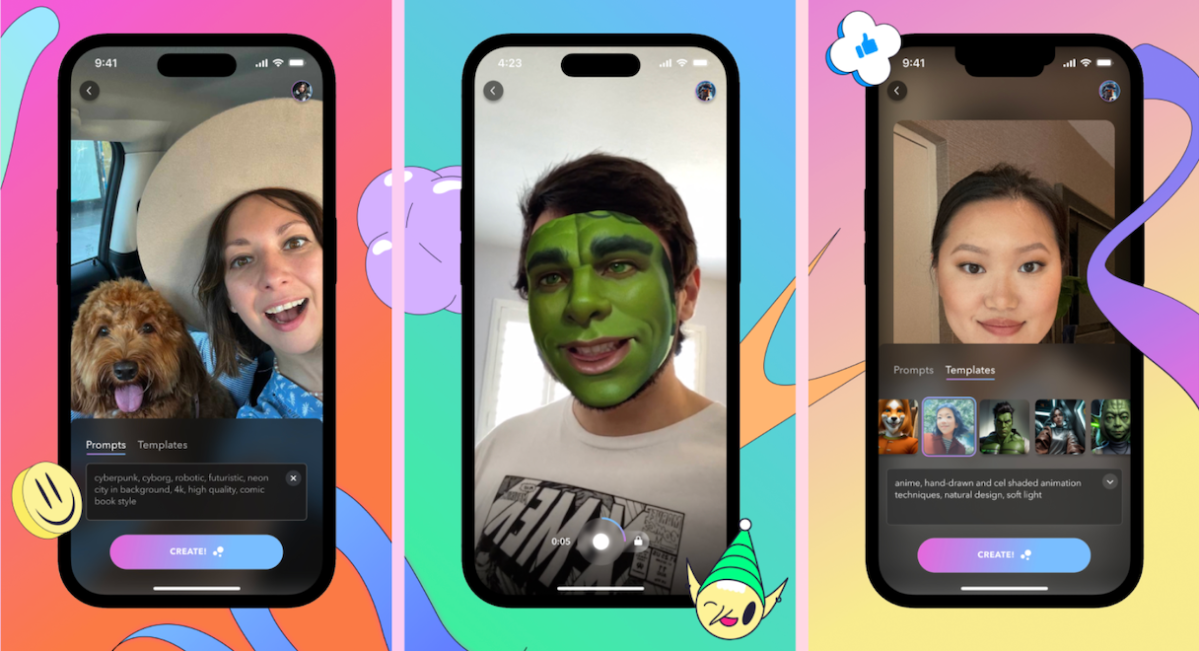Shader: The No-Code AR Creation Tool Challenging Industry Heavyweights
Technology giants Snap and TikTok may soon face some fierce competition in the AR development arena. Meet Shader, the newest player in the game, offering a unique no-code AR creation tool.
Shader aims to take on established platforms like Snap’s Lens Studio and TikTok’s Effect House, providing a platform for generating custom effects, 2D masks, and lenses in just minutes. This is a game-changer in an industry where creating a single AR filter can take hours and requires advanced engineering and design skills. Shader sets itself apart by utilizing the open-source Stable Diffusion model, allowing users to simply enter text-based prompts to generate their own personalized creations.
“Our mission is to make AR/AI effects accessible to everyone, empowering users to easily create personalized content.”
– Darya Sesitskaya, founder of Shader
Shader was founded by Darya Sesitskaya, a former design lead at Snap responsible for designing Snapchat’s popular AR camera, Lens Studio, Lens Cloud, and more. Sesitskaya also brings experience from her time at Wanna (formerly Wannaby), an AR technology company known for its virtual try-ons for sneakers, clothing, and watches. The Shader team consists of former Snap AR and Blizzard engineers.
During the beta launch of its flagship product in December 2023, Shader received positive feedback from users. The real-time AI camera app allows users to upload a photo and enter a prompt for the AI to generate a personalized AR effect. Users can then record a video of themselves wearing the mask or filter. Though the results may be on the simpler side, Shader plans to implement a premium subscription option for access to higher quality features.
The cross-platform functionality of Shader’s app allows for easy sharing of creations on social media platforms like Instagram, TikTok, and Snapchat. This gives creators the ability to showcase exclusive filters they’ve conceptualized. To further promote community and creativity, Shader plans to launch an in-app social feed where users can post their templates, allowing other creators to like, comment, and try out the effects.
Following in the footsteps of other AI editing apps, Shader also offers pre-made templates, including a fox mask, a Yoda-inspired mask, and an array of filters. And with approximately 3,000 downloads since its beta launch, Shader is off to a promising start. An Android version is also in the works.
Most recently, Shader launched a web version that scans faces using a built-in webcam. Though there are currently no pre-made templates available, creators can still customize their uploaded photos using prompts. Additionally, Shader is optimizing its iOS app for the newly released Vision Pro, taking advantage of Apple’s digital persona technology.
In addition, Shader offers an API and plugin for companies to integrate the technology into their own products. And with $580,000 in funding from notable investors like Betaworks, Greycroft, Differential Ventures, Mozilla Ventures, and On Deck, it’s clear there is a demand for AR creation tools. The investment will be used for developing new features, such as speech-to-text prompts, integration with platforms like Twitch, Discord, and Zoom, and growing the company’s marketing team.
“In the near future, we also plan to implement the ability to create voice-to-AR effects and 3D background replacements,” says Sesitskaya.
The company has already shared a demo of their speech-to-text technology on their YouTube channel, giving users a glimpse of what’s to come.
With a goal of making AR/AI effects accessible to everyone, Shader is expanding into various social face filters, including backgrounds, clothing, and hair. Their focus on user-friendly design principles aims to unlock new possibilities for the 400 million creators on social media.
With such innovative features and plans for the future, it’s clear that Shader is a force to be reckoned with in the world of AR development. Keep an eye out for this rising star and the exciting potential it holds for the future of AR creation.









[…] a cutting-edge filmmaking and technology company, has just made its debut to the world. Founded by filmmaker Gary Hustwit and digital artist […]